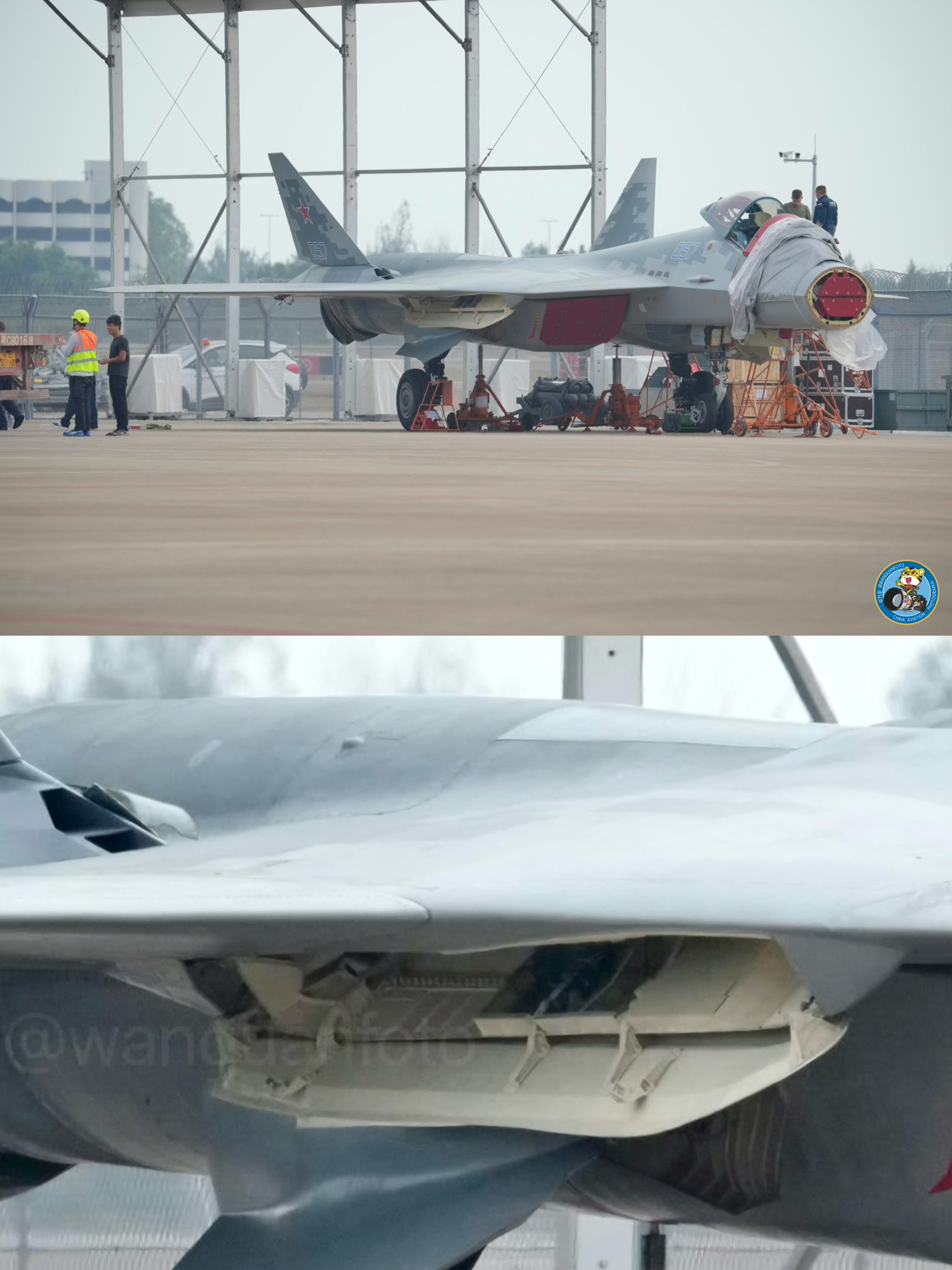SOURCE: AFI


For the first time, a clear photograph has emerged of the elusive side weapon bay on Russia’s Su-57, offering a detailed glimpse into one of the most mysterious aspects of the country’s fifth-generation fighter jet. Known for its emphasis on agility, advanced avionics, and stealth capabilities, the Su-57 represents Russia’s response to similar platforms like the F-22 and F-35, with unique engineering solutions tailored to meet both air superiority and multirole requirements.
The newly revealed image sheds light on the Su-57’s side weapon bay, a component that has been the subject of speculation since the aircraft’s early development. Here’s a breakdown of what this weapon bay means for the Su-57’s capabilities and how it reflects broader Russian design philosophy.
The side weapon bay, located near the Su-57’s main fuselage, is a critical feature that allows for internal weapons storage, which is essential for maintaining the aircraft’s stealth profile. Unlike conventional fighter jets, which often rely on external hardpoints to carry weapons, the Su-57’s internal bays enable it to carry missiles and other ordnance without compromising radar cross-section (RCS).
The side weapon bay appears to be optimized for short-range air-to-air missiles, likely intended to house advanced, high-agility infrared-guided weapons like the R-73 or the newer K-74M2. This configuration aligns with the Su-57’s mission to dominate within-visual-range (WVR) combat scenarios, while also supporting stealth requirements that reduce radar detectability.
Key Observations from the Photo
This first clear image has confirmed several theories regarding the layout and potential use of the side weapon bay:
Potential for Advanced Sensors: It’s possible that the side bay design also includes advanced targeting and sensor integration, giving the Su-57 improved lock-on-after-launch (LOAL) capabilities and enabling it to track and engage multiple targets more effectively.
Compact Missile Configuration: The bay’s design suggests it is intended for compact missiles, ideal for close-range engagements. By placing missiles in a side bay, the Su-57 can deploy weapons quickly without the need to open its larger belly bays, which could make the aircraft more detectable in certain combat scenarios.
Enhanced Maneuverability and Combat Readiness: The Su-57’s side weapon bay location allows for rapid missile deployment, ensuring quick response times during dogfights. This design reflects Russia’s focus on agility and responsiveness in WVR situations, emphasizing the Su-57’s role as a maneuverable, close-combat fighter.
Stealth Optimization: Keeping missiles in the side bays rather than on external hardpoints significantly reduces the RCS. This indicates that Russia has focused on a balanced stealth approach, where the Su-57 can selectively deploy weapons from its main and side bays based on mission requirements.
While other fifth-generation aircraft, such as the F-22 Raptor and F-35 Lightning II, also prioritize internal weapon storage for stealth, the Su-57’s side bay represents a unique approach. The F-22, for instance, uses a combination of internal main bays and side bays for AIM-9 Sidewinders, while the F-35 relies on larger internal bays optimized for a wider range of munitions. Russia’s choice to include a dedicated side bay for short-range missiles shows an emphasis on dogfight scenarios, likely due to their doctrine that values high-maneuverability in close combat.